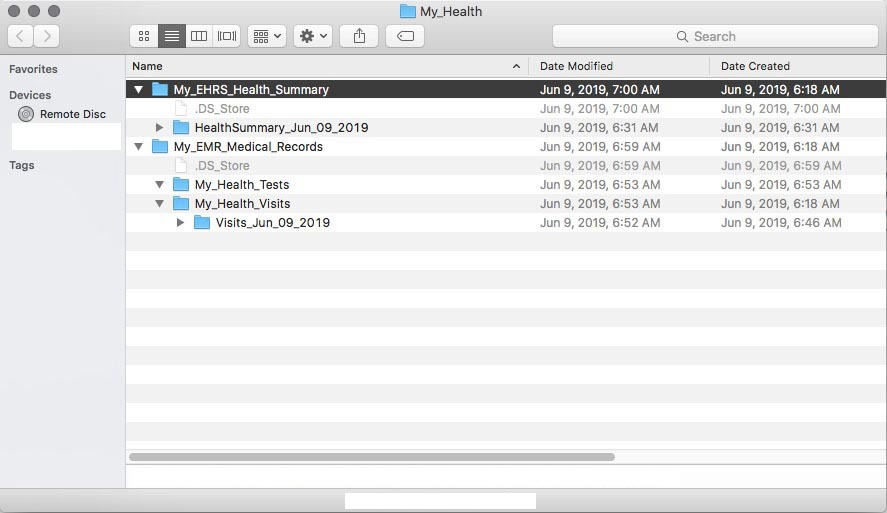Out of context misleading answers can scare everybody
The U.S.A. assumes that ILI/CLI are the same until testing confirms it at this time of the year. Just follow the key points in the CDC Covid-View report below — it is assumed that all seasonal flu activity has stopped except for COVID-19. “The flu and the covid viruses.”
The question is: Does this mean that we have a biennial or longer flu season, instead of a annual one with different diseases and viruses?
Answer: Probably.
Is it mostly over?
Answer: Yes please be careful on planes and in crowds — It’s the droplets from sneezing or coughing. They forgot to move the decimal points three places left again. It’s a percentage of a percentage (ratios) word problem which makes it go all out of context and scary. This happened in 2008–2009 and again in 2019–2020. Here is the main point of the report:
The CDC Reports:
Nationally, laboratory confirmed influenza [ILI and CLI including Covid-19] activity as reported by clinical laboratories decreased to levels usually seen in summer months which, along with changes in healthcare seeking behavior and the impact of social distancing, is likely driving the decrease in ILI [/CLI] activity.
See graph below:
LA’s Answers to the Bad News Articles. Full text below. Look for comments in [Brackets] to help you understand what they are saying.
[Read More]
https://www.cdc.gov/coronavirus/2019-ncov/covid-data/pdf/covidview-04-10-2020.pdf
The CDC Reports:
Nationally, laboratory confirmed influenza [ILI and CLI including Covid-19] activity as reported by clinical laboratories decreased to levels usually seen in summer months which, along with changes in healthcare seeking behavior and the impact of social distancing, is likely driving the decrease in ILI [/CLI] activity.
Key Points
CDC is modifying existing surveillance systems, many used to track influenza and other respiratory viruses annually, to track COVID-19.
-
- Nationally, the percentage of laboratory specimens testing positive for SARS-CoV-2 continued to increase.
- Visits to outpatient providers and emergency departments (EDs) for illnesses with symptoms consistent with COVID-19 are elevated compared to what is normally seen at this time of year but decreased compared to levels reported last week. At this time, there is little influenza virus circulation so the elevated proportion of people presenting with these symptoms is likely due to COVID-19, but may be tempered by a number of factors including less ILI overall because of widespread adoption of social distancing efforts as well as changes in healthcare seeking practices.
[ED: It’s right here below from the official report: The whole problem is moving the three decimal places to the left on the 12.3 for instance. It’s actually in their manual here: https://www.cdc.gov/nchs/data/training/module2.pdf]
-
- The overall cumulative COVID-19 associated [ [Dr visit/] hospitalization rate is 12.3 per 100,000, with the highest rates in persons 65 years and older (38.7 per 100,000) and 50-64 years (20.7 per 100,000). Hospitalization rates for COVID-19 in older people are higher than what is typically seen early in a flu season.
[ED: Right here again below: The real number is a percentage of the above ratios or percentages. This becomes a math word problem to figure out the real personal daily risk to you.]
-
- Based on death certificate data, the percentage of deaths attributed to COVID-19 increased from 4.0% during week 13 to 6.9% during week 14. The percentage of deaths due to pneumonia (excluding COVID-19 or influenza) decreased from 7.5% during week 13 to 7.2% during week 14.
ED:
For all Lab Confirmed Covid-19 [ILI/CLI] outpatient hospital and reporting clinical visits the percentage of people that were admitted into the hospital in the U.S.A. with ILI/CLI Covid-19 are:
0.01230% total over all age groups hospitalization rate
0.03870% age 67 and older hospitalization rate
0.02070% age 50-64 hospitalization rate
I.e. 12.3 hundred thousandths (by multiples of 10)
Move decimal three places <— left
The odds of being sick enough to get admitted with Covid–19 by the age groups above:
8129 to 1
2582 to 1
3702 to 1
The odds of getting Corona Virus/Flu [ILI/CLI] U.S.A.:
0.16263% 624 to 1
The odds of being admitted to the hospital from Corona Virus/Flu [ILI] U.S.A:
0.01230% 8,129 to 1
The odds of dying from Corona Virus/Flu [ILI/CLI] U.S.A.
0.00585% 17,093 to 1
The odds of getting Corona Virus Worldwide.:
0.02092% 4,779 to 1
The odds of dying from Corona Virus Worldwide:
0.00129% 77,518 to 1
[Need to double check the death rate worldwide but with the U.S.A. combining all flu into Influenza Like Illnesses and Covid Like Ilnesses WHO breakout is difficult unless guidelines are examined per country the percentages are different in the U.S.A and in Italy from the rest of the world because of the way it is reported on the death certificates.]
For reference on death rates in a hospital with and without Influenza Like Illness and Covid Like Illness (ILI/CLI) please see https://www.hcup-us.ahrq.gov/reports/statbriefs/sb253-Influenza-Hospitalizations-ED-Visits-2006-2016.jsp
Selected quotes from that briefing:
Between 2006 and 2016, the combined number of inpatient stays plus ED visits involving influenza ranged from 189,200 (rounded to the nearest hundred) in the 2011-2012 flu season to 1,074,400 in 2014-2015. During this flu season, 7,500 out of 223,300 inpatient stays resulted in in-hospital death (3.4 percent).
In 2015-2016, the in-hospital mortality rate for stays involving influenza was as high as 8.7 percent among patients with cancer and 6.4 percent among patients with heart or cerebrovascular disease. Patients with these conditions without influenza had in-hospital mortality rates of 5.3 percent and 4.0 percent, respectively.
In general inpatient hospital mortality rates for all causes with all age groups is 1.9% without ILI/CLI and 3.6% with ILI/CLI. (with and without “the flu”)

[/ED]
CDC:
Cumulative COVID-19-associated hospitalization rates since March 1, 2020, will be updated weekly.The overall cumulative hospitalization rate is 12.3 per 100,000, with the highest rates in persons 65 years and older (38.7 per 100,000) and 50-64 years (20.7 per 100,000)
ILINet The U.S. Outpatient Influenza-like Illness Surveillance Network (ILINet) provides data on visits for influenza-like illness (ILI) (fever [≥100○F] and cough and/or sore throat) to approximately 2,600 primary care providers, emergency departments and urgent care centers in all 50 states, Puerto Rico, the District of Columbia and the U.S. Virgin Islands. Mild COVID-19 illness presents with symptoms similar to ILI,so ILINet is being used to track trends of mild COVID-19 illness and allows for comparison with prior influenza seasons. Nationwide during week 14, 3.9%of patient visits reported through ILINet were due to ILI. This percentage is above the national baseline of 2.4%, but represents the second week of a decline after three weeks of increase beginning in early March. The percentage of visits for ILI decreased in all age groups. Nationally, laboratory confirmed influenza activity as reported by clinical laboratories decreased to levels usually seen in summer months which, along with changes in healthcare seeking behavior and the impact of social distancing, is likely driving the decrease in ILI activity.
ED: ILI/CLI is the new “flu” Let’s see the graph again:

The Normal Online News is Saying: Text Link
ED Selected Excerpt:
Put another way: Junking the stay-at-home order now would result in 18,000 people needing hospitalization in L.A. County by mid-May, in a county with fewer than 4,000 hospital beds. But maintaining the current level of physical distancing would keep the number of those needing hospitalization under 1,000 by late May, and the number would be significantly lower if we improved our physical distancing.
Truth: The county has 23,000 hospital beds and is considered a “over-bedded market”
They are talking about the 4 main LA County hospitals in the Yahoo article.
Yahoo Quote:
“Physical distancing is working. It has worked to date, and it is working now, and it is important that that physical distancing remain in place in order to reduce not just the strain on the hospital system, but more importantly the overall number of infections,” said Dr. Christina Ghaly, director of the L.A. County Department of Health Services. “It is absolutely the single most important weapon that we have in our arsenal to fight the virus.”
LA County has few ICU beds and ventilators as coronavirus cases increase, officials say
It’s a partial misleading answer.
Truth:
The county’s 100 hospitals currently have a total of 23,000 hospital beds — including the ICU beds — and most of those are currently occupied, officials said.
The county operates four public hospitals, Ghaly said, where more than 450 hospital beds out of 1,600 were currently available. The four public hospitals operate a combined 175 ICU beds; Ghaly said the county was seeking approval from the state to have more flexibility in who gets an ICU bed.
Magic Numbers:
U.S.A. percentage of Covid-19 confirmed inpatients: .0129% => 0.013%
U.S.A. percentage of those patients who die => 0.00444%
LA County Population:
If you take a static percentage on one day only with 10.04 million people then:
Number of people that should test positive: 13,052
Number of people who will die: 445
It’s a slightly misleading number but it’s better than nothing,.. The curve is actually the New Over Night numbers
The actual total numbers today that go back to December are:
As of April 9, 2020, there are a total of 19,472 positive cases active and closed and 541 deaths (obviously closed) in California.
We were close,.. lol how close? You can do the math yourself.
CDC new guidelines for death certificates states that if there is no test available for a “influenza or pneumonia death” it is assumed that it is Covid-19 Crown Flu related, forgetting that H1N1 is a larger killer than Crown Flu. The numbers will be skewed a bit on the death certificates but it falls into a Influenza Like Illness initial diagnosis that gets confirmed by lab testing. When you see the numbers of dead it is being assumed that IF there are no tests THEN it will be reported as Covid-19 so it is a combined ILI/CLI number we are dealing with in the U.S.A.
The Witch says the current word problem is:
It’s the New Over Night numbers that we need to use because it’s a moving snapshot window of time we want — that’s the metric to use for adjustment of the system.
In car racing terms it’s like using each corner of the oval at the Indy 500 as a separate corner time to adjust the car — then each two corners and the short chute between them and finally the total lap time. The intermediate numbers are corners two and four exit speeds and speed at the end of the straights they make up different percentages of lap times so it’s a percent of a percent of a percent of a whole. You can keep adding more corners if you want to and the concept still holds true. You can choose where to spend your efforts if you know where the “ratios really matter”.
We Get a Pumpkin Harvest Race!
Thx LA TImes for the thoughts in your articles
ILI/CLI is the new “flu”
Please remember that 2.85 million people die in the U.S.A. every year ~0.85% that’s 7,808 per day.
Always check your math. I am sure there are errors in here somewhere 😉
“bwah, ha ha ha, ha ha.”
[ED/G]
Contact | https://thehekate.org/contact-us/
Official Witch News
Official Magic and Witchcraft News
Pagan, Neo-Pagan, Wiccan
Bohemian After Dark
Notes:
Calculating Rates into Percentages:
https://www.cdc.gov/nchs/data/training/module2.pdf
Module 2. Teen Pregnancy 17 October 1999
How are rates converted into percentages?
While rates are calculated per 1,000 or 100,000 population, they can often be expressed as percentages. A percentage is expressed as “per 100 people.”
To convert a rate per 1,000 to a percentage, simply move the decimal point one digit to the left (essentially dividing the rate by 10).
To convert a rate per 100,000 to a percentage (like those in Module 1), you would move the decimal point three digits to the left.
Example: Rates as Percentages
Suppose the birth rate among females age 15-19 in 1997 were 15.3 per 1,000. This could be expressed as 1.53 per 100, meaning that 1.53% of the females age 15-19 had live births that year. Further suppose that the suicide rate in the total population was 38.8 per 100,000. This represents 0.0388 per 100 or .04% of the population dying by suicide.





















